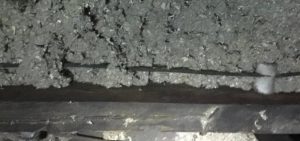 In the early 1900s through the 1940s, knob and tube wiring were used in homes that were first installed with electric. In some areas, the installation of this method was done up to the 1970s. Even today, it is not unusual to find homes that still have knob and tube wiring present.
In the early 1900s through the 1940s, knob and tube wiring were used in homes that were first installed with electric. In some areas, the installation of this method was done up to the 1970s. Even today, it is not unusual to find homes that still have knob and tube wiring present.
When trying to figure out if your home has knob and tube wiring, you just need to look to the wiring in the basement or attic simply. It is identified as white, spool-like knobs made of ceramic. They are usually nailed to joists, with wires snaking through the nobs. Ceramic tubing is used to protect the loose wires that to look to the wiring in the basement or attic simply through the lumber.
Out of Sight Not Out of Mind
Just because you don’t see knobs and tubes in the attic or basement, doesn’t mean you aren’t plagued by them in your household. It is, in fact, very common to find knob and tube wiring hidden by walls in your home. Previous owners may have walled over the unsightly wiring method. In this case, the only way to determine if you have this wiring in your home is to make holes or open up the walls.
Is Knob and Tube Wiring Dangerous
Though it isn’t illegal, and replacement isn’t a requirement, it is an out-of-date method. This wiring method was not designed to withstand the heavy electrical usage of the modern home. Common household appliances and devices of today weren’t as common 60 years ago, so straining this system can be dangerous to the house and its occupants. These large loads of energy that are demanded by our everyday electronics cause an overload on these wires, forcing them to heat up to temperatures that it can not handle. This creates potential fire hazards. However, this isn’t the only danger of having a knob and tube wiring. Other issues include:
- Ungrounded Wire– Without the ground wire, only using neutral and hot wiring, you are at risk as are your appliances.
- Compounding Damages– Over time, these wires will lose their rubberized cloth wrapping as they become brittle and crack. When the outer layer falls off, it leaves the wires exposed. This creates both fire and a shock hazard. You will also see compound wire exposure, as well as safety issues when there is exposure to animal damage and leaks.
- Added Insulation– With the attic and wall cavities having added insulation, it can help promote overheating in these wires. They are designed to be suspended in the air, with open access. Covering them will only lead to safety hazards and ceramic damages.
Should I Replace Knob and Tube Wiring?
Though, as previously stated, it isn’t a requirement to replace this wiring, it should be done to avoid dangerous situations and hazards. But any wiring job should never be a DIY project, as it must be done correctly by experienced hands. Professional Electric, based out of New Orleans, has the licensed electricians that have the training and experience to upgrade your wiring safely so you can feel safe.